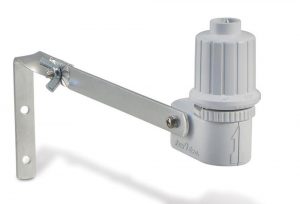Smart Irrigation Technologies: Rain/Freeze Sensors
 After reading our last three blog posts about smart irrigation technologies, you should be an expert by now, right? Lucky for you, we still have one final topic to cover to complete our series—rain and freeze sensors.
After reading our last three blog posts about smart irrigation technologies, you should be an expert by now, right? Lucky for you, we still have one final topic to cover to complete our series—rain and freeze sensors.
In case you need a refresher, smart irrigation systems tailor watering schedules and run times automatically to meet specific landscape needs. These controllers significantly improve outdoor water use efficiencies, which helps us cut down on the average of 9 billion gallons of water used per day in the United States. So far we have covered weather-based controllers, pressure regulators, and high efficiency nozzles.
Another way you can leverage smart irrigation technology is by utilizing rain and freeze sensors. Rain sensors prevent irrigation systems from running when it is raining and right after rain events when irrigation is unnecessary. Most devices are available in both wireless and hard-wired versions and include hygroscopic disks that swell when it rains and shrink down as they dry out. An electrical switch is depressed or released by the hygroscopic disk stack, and the rate of drying is typically adjusted by controlling the ventilation reaching the stack.
Some electrical sensors use tipping bucket or conductance probes to measure rainfall, but both wireless and wired versions use similar mechanisms to temporarily cease watering by the irrigation controller when they are connected to the sensor terminals. Some rain sensors also include a freeze sensor to keep the system from operating in freezing temperatures, particularly where irrigation systems are still used over the winter.
These devices can reduce irrigation water usage up to 35 percent, help extend irrigation system life, and are especially helpful when you are out of town and unable to manually turn off the water.
